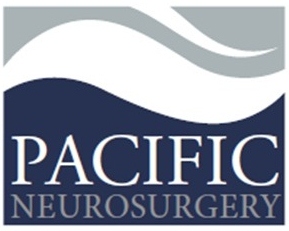[two_thirds]
A cerebral aneurysm occurs when a weak spot in a brain blood vessel balloons. Usually, aneurysms develop at the point where a blood vessel branches, because the “fork” is structurally more vulnerable. Engorged with blood, the aneurysm can either cause pressure on the surrounding brain tissue or it can rupture (which causes bleeding on the brain, also known as a hemorrhagic stroke). A ruptured aneurysm can quickly become life-threatening and require prompt medical treatment. However, most brain aneurysms don’t rupture, lead to health problems, or cause symptoms. Often aneurysms can go undiagnosed for long periods of time and are often detected during tests for other conditions.
Annually, approximately 30,000 Americans experience a ruptured brain aneurysm, and roughly only 1 in 5 aneurysms are diagnosed prior to rupture. Among patient’s whose aneurysm does rupture, about 40% to 50% will survive, 20% without lingering physical deficits. Screening for cerebral aneurysm is not standard annual-physical-examination protocol.
Symptoms
Unfortunately, most brain aneurysms are not detected until they have already ruptured; however, large unruptured aneurysms can sometimes present with symptoms such as vision changes, pain above and/or behind the eye, nerve paralysis, localized headache, neck pain, nausea, and/or vomiting.
The key symptom of a ruptured aneurysm is sudden onset of a severe headache, often described as the “worst headache” ever experienced. Other common signs and symptoms of a ruptured aneurysm include:
- Sudden, extremely severe headache
- Nausea and vomiting
- Stiff neck
- Blurred or double vision
- Sensitivity to light
- Seizure
- A drooping eyelid
- Loss of consciousness
- Confusion
Risk Factors
Brain aneurysms develop as a result of thinning and degenerating artery walls. They can develop for a variety of reasons, including age, genetic predisposition, injury, or infection. Aneurysms often form at “forks” or branches in arteries because those sections of the vessel are weaker. Although aneurysms can appear anywhere in the brain, they are most common in arteries at the base of the brain. Risk factors include:
- Older age
- Smoking
- High blood pressure (hypertension)
- Hardening of the arteries (arteriosclerosis)
- Drug abuse, particularly the use of cocaine
- Head injury
- Heavy alcohol consumption
- Certain blood infections
- Lower estrogen levels after menopause
Diagnosis
Computed tomographic angiography (CT scan), magnetic resonance angiography (MRI scan), and/or cerebral angiograms are effective cerebral aneurysm diagnostic screening tools.
While CT and MRI scans can show many aneurysms, most patients will undergo a cerebral angiogram for definitive diagnosis and to determine the best course of treatment. An angiogram is an invasive procedure in which a catheter (resembling a flexible tube) is inserted into the groin and guided up through the blood vessels to the site of the aneurysm. A liquid dye or contrast agent is injected into the vessel so that highly detailed pictures can be taken, revealing the location, size, and shape of the aneurysm. Screening for cerebral aneurysm is not standard annual-physical-examination protocol. However, since cerebral aneurysm carries a genetic disposition, it is highly recommended that cerebral aneurysm patients’ close family members obtain diagnostic testing.
Treatment Options
At Pacific Neurosurgery, our neurosurgeons, neuroradiologist, and neurointerventional surgeons, work collaboratively to care of those patient’s suffering from brain aneurysm. We are one of the only private practice’s in the Bay Area to offer this multi-disciplinary care for brain aneurysm under one roof.
Not all aneurysms need surgical interventional and, depending on your condition, your physician may elect to closely observe your aneurysm instead. Those that need surgical intervention can be treated by a traditional “open clipping” or an endovascular “coiling” procedure.
“Open clipping” is performed by a neurosurgeon and involves actually opening the skull in order to place a clip across the aneurysm. Surgical slipping isolates the aneurysm from normal blood circulation. This prevents blood flow from entering the aneurysm, which then keeps it from bursting. Prior to surgery, cerebral angiography images identify the exact aneurysm location. Once the brain is exposed, the neurosurgeon located the aneurysm with the aid of a surgical microscope and places a tiny titanium clip at the neck of the aneurysm, to stop blood flow. To ensure the aneurysm is adequately clipped, the neurosurgeon may elect to perform an intra-operative angiogram after the clip placement to monitor blood circulation in the brain. This procedure is routinely performed by our Pacific Neurosurgery team.
Coil embolization, commonly referred to as coiling, is a minimally-invasive surgical procedure performed by a neurointerventional surgeon. Accessing the brain with an incision the size of an eyelash, the aneurysm is repaired via a blood vessel in the groin. Once the aneurysm is located, a micro-catheter is inserted through the larger catheter and guided to the aneurysm for coiling. The platinum coils, flexible enough to conform to the aneurysm shape, are threaded into the aneurysm, reducing or blocking blood flow feeding the aneurysm which thereby reduces the pressure that would otherwise cause it to burst. Using state-of-the-art technology, coil embolization is commonly performed by Pacific Neurosurgery neurointerventionalists at CPMC’s interventional radiology suite.
As with all treatment options, decisions are made on a case-by-case basis and will be explained to you by your doctor.[/two_thirds]
Doctors Who Treat Brain Aneurysm
Patient Resources
Anatomy of the Brain The Three Main Parts of the Brain AANS Cerebral Aneurysm Fact Sheet About Cerebral Aneurysm Treatment at California Pacific Medical Center
Journals and Publications


